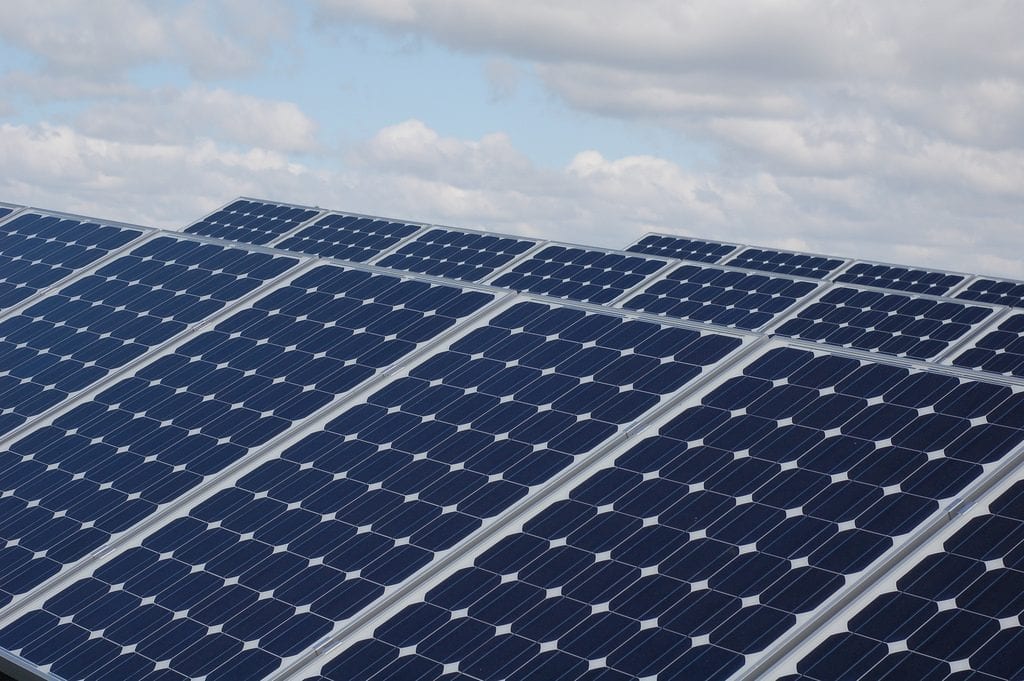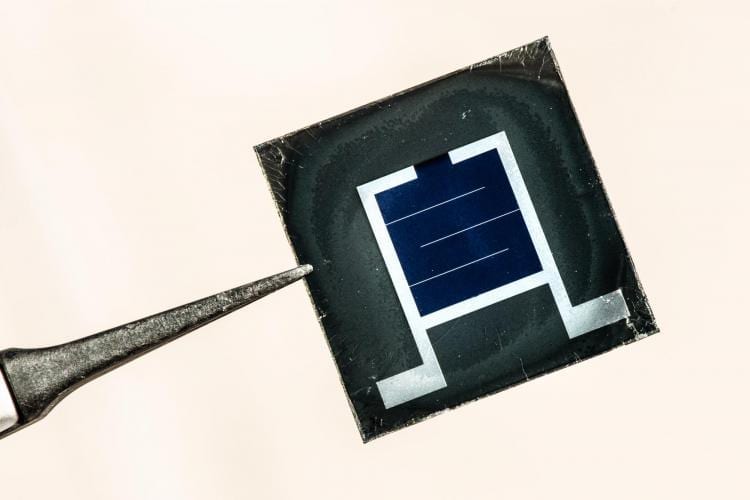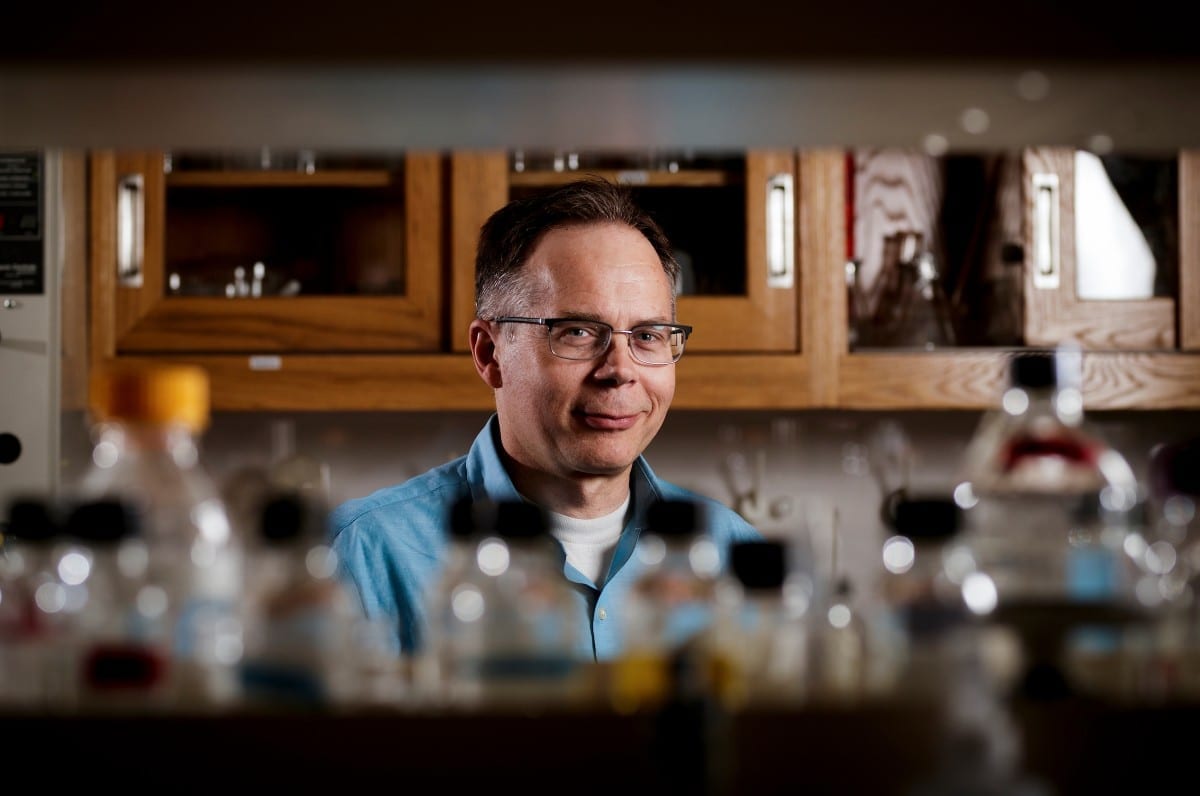
UBC researchers have found a cheap, sustainable way to build a solar cell using bacteria that convert light to energy.
Their cell generated a current stronger than any previously recorded from such a device, and worked as efficiently in dim light as in bright light.
This innovation could be a step toward wider adoption of solar power in places like British Columbia and parts of northern Europe where overcast skies are common. With further development, these solar cells—called “biogenic” because they are made of living organisms—could become as efficient as the synthetic cells used in conventional solar panels.
“Our solution to a uniquely B.C. problem is a significant step toward making solar energy more economical,” said Vikramaditya Yadav, a professor in UBC’s department of chemical and biological engineering who led the project.
Solar cells are the building blocks of solar panels. They do the work of converting light into electrical current. Previous efforts to build biogenic solar cells have focused on extracting the natural dye that bacteria use for photosynthesis. It’s a costly and complex process that involves toxic solvents and can cause the dye to degrade.
The UBC researchers’ solution was to leave the dye in the bacteria. They genetically engineered E. coli to produce large amounts of lycopene—a dye that gives tomatoes their red-orange colour and is particularly effective at harvesting light for conversion to energy. The researchers coated the bacteria with a mineral that could act as a semiconductor, and applied the mixture to a glass surface.
With the coated glass acting as an anode at one end of their cell, they generated a current density of 0.686 milliamps per square centimetre—an improvement on the 0.362 achieved by others in the field.
“We recorded the highest current density for a biogenic solar cell,” said Yadav. “These hybrid materials that we are developing can be manufactured economically and sustainably, and, with sufficient optimization, could perform at comparable efficiencies as conventional solar cells.”
The cost savings are difficult to estimate, but Yadav believes the process reduces the cost of dye production to about one-tenth of what it would be otherwise. The holy grail, Yadav said, would be finding a process that doesn’t kill the bacteria, so they can produce dye indefinitely.
He added that there are other potential applications for these biogenic materials in mining, deep-sea exploration and other low-light environments.
Learn more: Bacteria-powered solar cell converts light to energy, even under overcast skies
The Latest on: Bacteria-powered solar cell
[google_news title=”” keyword=”bacteria-powered solar cell” num_posts=”10″ blurb_length=”0″ show_thumb=”left”]
via Google News
The Latest on: Bacteria-powered solar cell
- Can perovskite solar cells outshine silicon and revolutionize solar energy?on May 3, 2024 at 3:06 am
Perovskite, a revolutionary material, promises to surpass silicon efficiency and usher in a new era of affordable, sustainable solar energy.
- Super-Bacteria Found on the International Space Stationon May 1, 2024 at 2:32 pm
The microgravity, solar radiation, and high carbon dioxide levels that the bacteria experience in low orbit have forced them to evolve into a kind of super-bacteria. The new study focuses on ...
- Solar Energy Newson April 30, 2024 at 5:00 pm
Apr. 8, 2024 — Researchers have fabricated a new four-terminal organic solar cell with a tandem configuration with a 16.94% power conversion efficiency (PCE). The new device is composed by a ...
- How Do Solar Panels Work?on April 26, 2024 at 5:00 pm
To be useful to AC appliances, that DC power must go through an inverter. There are a few dominant types of solar panel technology. Perhaps best known are solar cells made of silicon, in ...
- Researchers achieve monumental breakthrough with solar cells made from living material — here's how it workson April 24, 2024 at 3:15 am
"This green PV technology will be the future sustainable solution for solar power generation." Researchers achieve monumental breakthrough with solar cells made from living material — here's how it ...
- Bacteria in cancer unmaskedon April 8, 2024 at 5:00 pm
Having analyzed over 4000 tumors, they shed light on the diversity of these co-inhabitants and how they might interact with cancer cells ... computer power to figure out which bacteria congregate ...
- These Solar-Powered Carnivorous Flatworms Divide and Conqueron March 25, 2024 at 5:00 pm
And those reddish cells belong to the acoel itself ... a single being made up of two or more completely different species. In this case, a solar-powered predator. But that’s not even the weirdest ...
- How do solar panels work? Your renewable energy system explainedon February 24, 2024 at 5:06 pm
Solar panels can save you money on bills since you’ll use less grid energy and can sell excess electricity to your power company ... are made up of photovoltaic cells, or PV cells.
- solar cellon February 4, 2024 at 4:00 pm
As the price of solar panels continues to fall, more and more places find it economical to build solar farms that might not have been able to at higher prices. High latitude locations, places with ...
via Bing News











